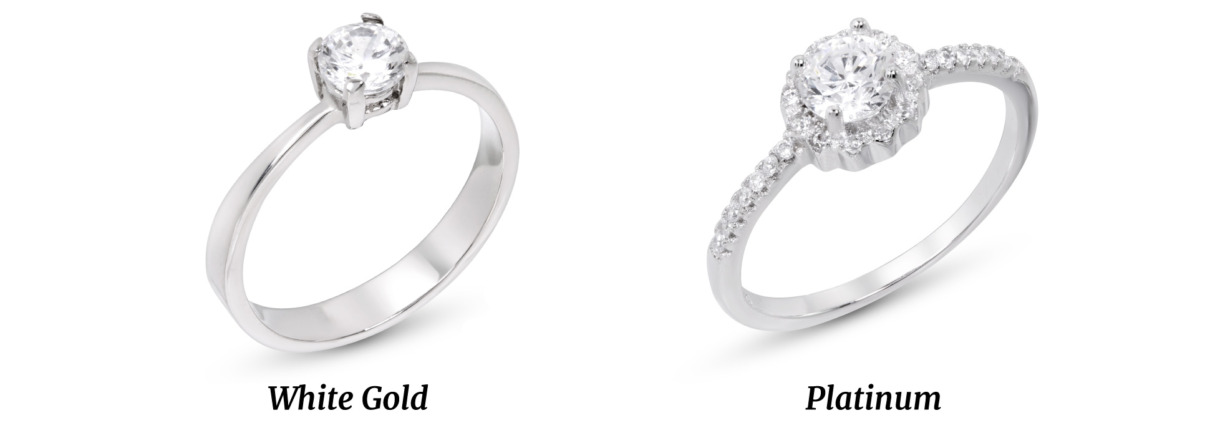Choosing the perfect engagement ring: White gold vs platinum pros and cons
When choosing the perfect engagement ring, one of the biggest decisions you’ll face is selecting the right metal. For those looking for contemporary elegance, white gold and platinum are top contenders. Both metals beautifully complement diamonds and gemstones and offer durability for everyday wear, but how do you choose between them?
To help you make the right decision, this blog explores the pros and cons of these two stunning metals.
What’s the difference between white gold and platinum?
At first glance, white gold and platinum may look similar, but their composition, maintenance, and longevity differ significantly. White gold is created by mixing yellow gold with white metals, while platinum is a naturally white metal with a higher density. These differences impact everything from appearance to durability and cost.
Let’s explore the key factors that set them apart.
1. Durability
Platinum is built to last. It’s one of the most durable metals available for engagement rings, so perfect for everyday wear. Unlike white gold, platinum doesn’t wear down over time; it develops a natural patina (a natural coloration or film that develops over time) that can be polished if desired.
White gold is strong but requires maintenance. It’s more durable than yellow or rose gold due to its alloy mixture, but softer than platinum and so can be prone to scratches. Over time, the rhodium plating that gives white gold its bright white sheen can wear off, requiring replating to maintain its luster.
Which metal stands the test of time? Platinum is the winner here.
2. Wearability
Platinum is a substantial metal that many find more luxurious. But this also means it is heavier which can take some getting used to if you’re accustomed to lighter jewelry.
White gold is lighter than platinum, making it comfortable for everyday wear and a great choice for those who prefer a delicate feel.
Which metal is the most comfortable to wear? It’s a tie! Platinum offers a premium, weighty feel, while white gold is lighter and more comfortable for some wearers.
3. Cost
Platinum is a premium choice. It’s more expensive than white gold due to its rarity, density, and purity. But, while platinum requires a higher upfront investment, it holds its value in the long term.
White gold is more affordable than platinum but no less beautiful, giving you that high-end look at a budget-friendly price point.
Which metal is the most affordable? White gold, for its affordability without compromising on beauty.
4. Hypoallergenic properties
Platinum is 100% hypoallergenic so is ideal for those with metal allergies.
White gold, however, may contain allergenic metals such as nickel. But opting for nickel-free white gold or replating with rhodium can help reduce sensitivity.
Which is gentler on sensitive skin? Platinum is the winner here for being naturally hypoallergenic.
Which metal is right for you?
Here’s a quick summary to help guide your decision:
| Feature | Platinum | White Gold |
| Durability | Extremely durable, develops patina | Strong but requires replating |
| Color | Naturally white, matte over time | Bright white, maintains shine with replating |
| Cost | More expensive | More affordable |
| Maintenance | Low—polish as needed | Requires replating every 12–18 months |
| Hypoallergenic? | Yes, 100% | No, may contain nickel |
| Weight | Heavier, luxurious feel | Lighter, comfortable wear |
We can help you find the perfect engagement ring
Whether you choose the enduring elegance of platinum or the luminous beauty of white gold, your engagement ring should reflect your love story. At BRAG, we craft all our rings in-house, ensuring exceptional quality, meticulous craftsmanship, and a perfect fit for every couple.
Still unsure which metal is right for you? Contact BRAG today for expert guidance and a personalized experience.



